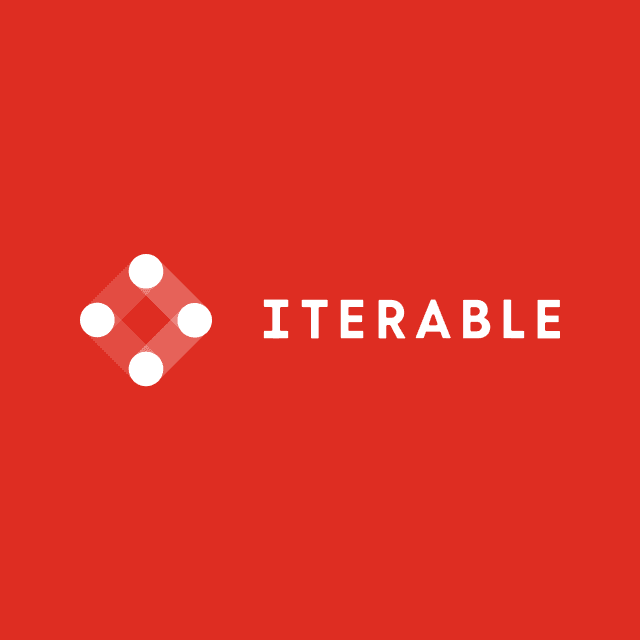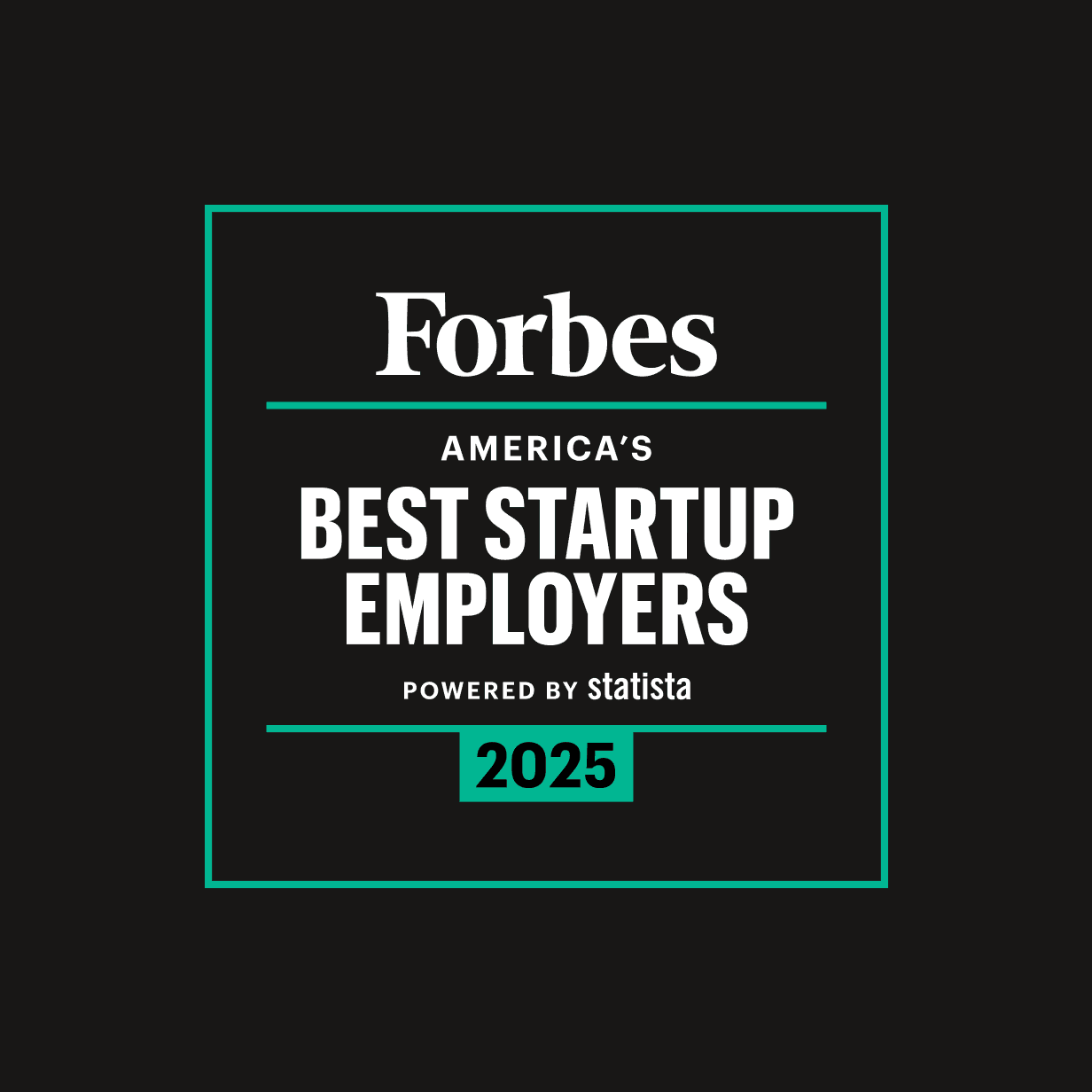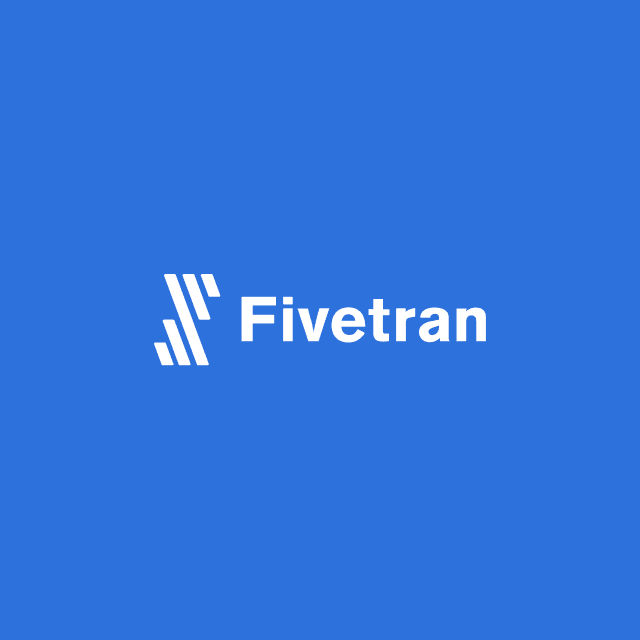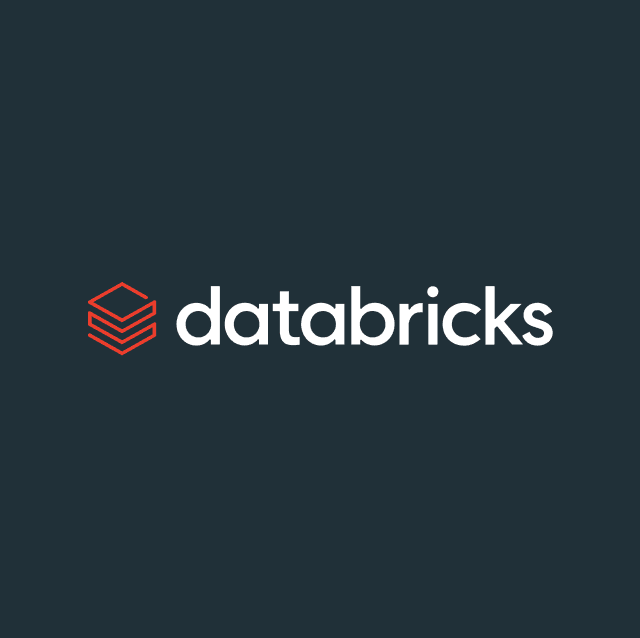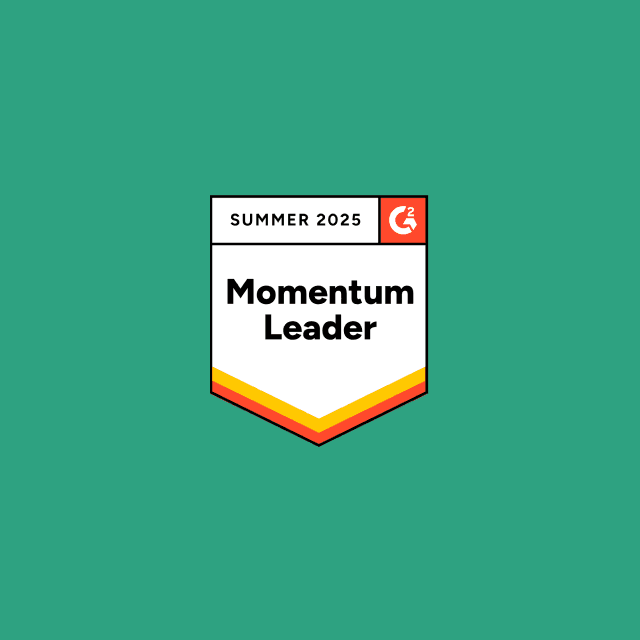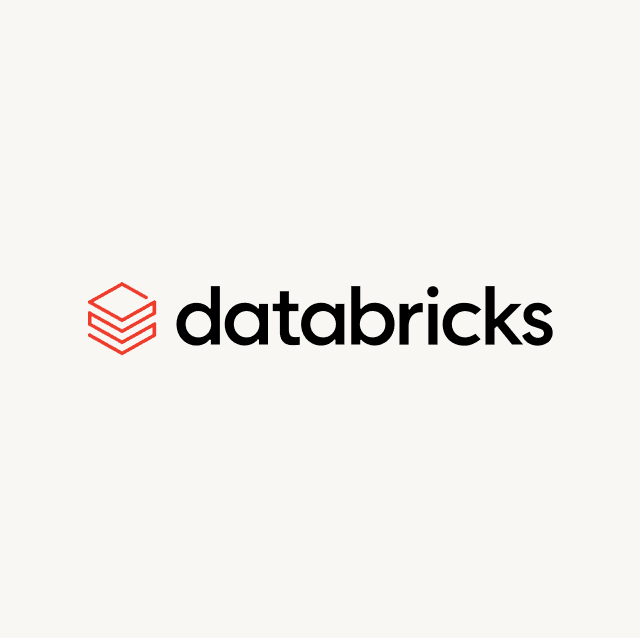I’ve been in the digital marketing space since before the internet arrived. Most of this time was spent in the digital analytics area. For decades, digital marketers like me have been touting made-up terms like Customer 360 and the 360-degree view of the customer. The ultimate goal was to provide as good an experience (or better) digitally as we used to do in person. I have been on the client side, a consultant, and a vendor during this time. Organizations have spent a fortune on technology to provide better customer experiences via data. But what do they have to show for it?
I am constantly shocked at how badly organizations leverage data to improve digital personalization. While social media networks know what products or content you want before you do, many Fortune 500 organizations are way behind. Many organizations I know (firsthand) have spent millions of dollars on technology and consulting, and still have websites and apps that show users the same products and content.
Real-world examples
For example, this week I visited the Home Depot website. When I arrived, Home Depot didn’t know who I was since it had been a while since I had visited the site, and no cookie remained. Since my browser had permission to share my location, all Home Depot knew was that I lived in the Chicago suburbs. Here is what I saw:
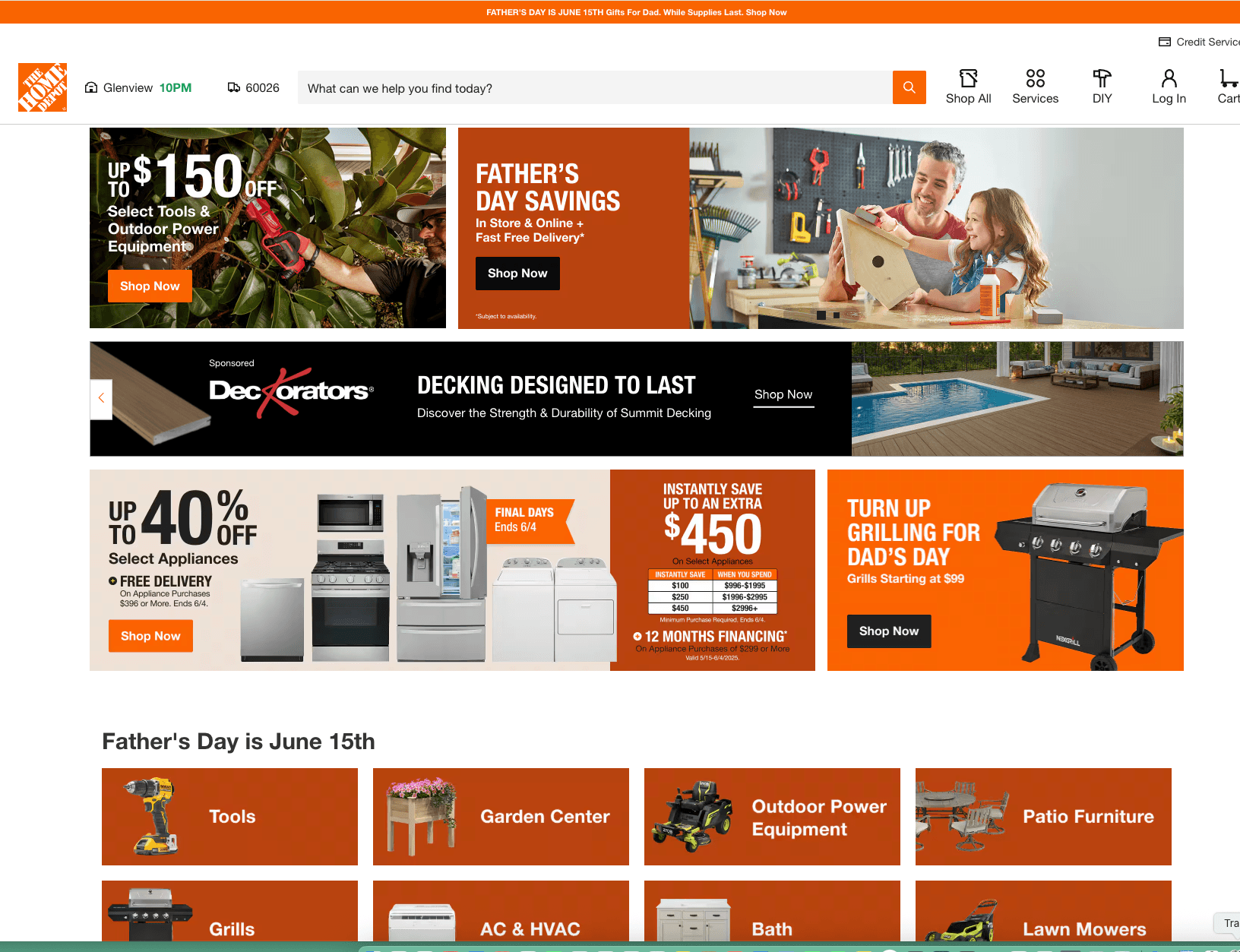
From here, I logged into my Home Depot account, which has my profile information and past purchases. Here is what I saw after I logged in:
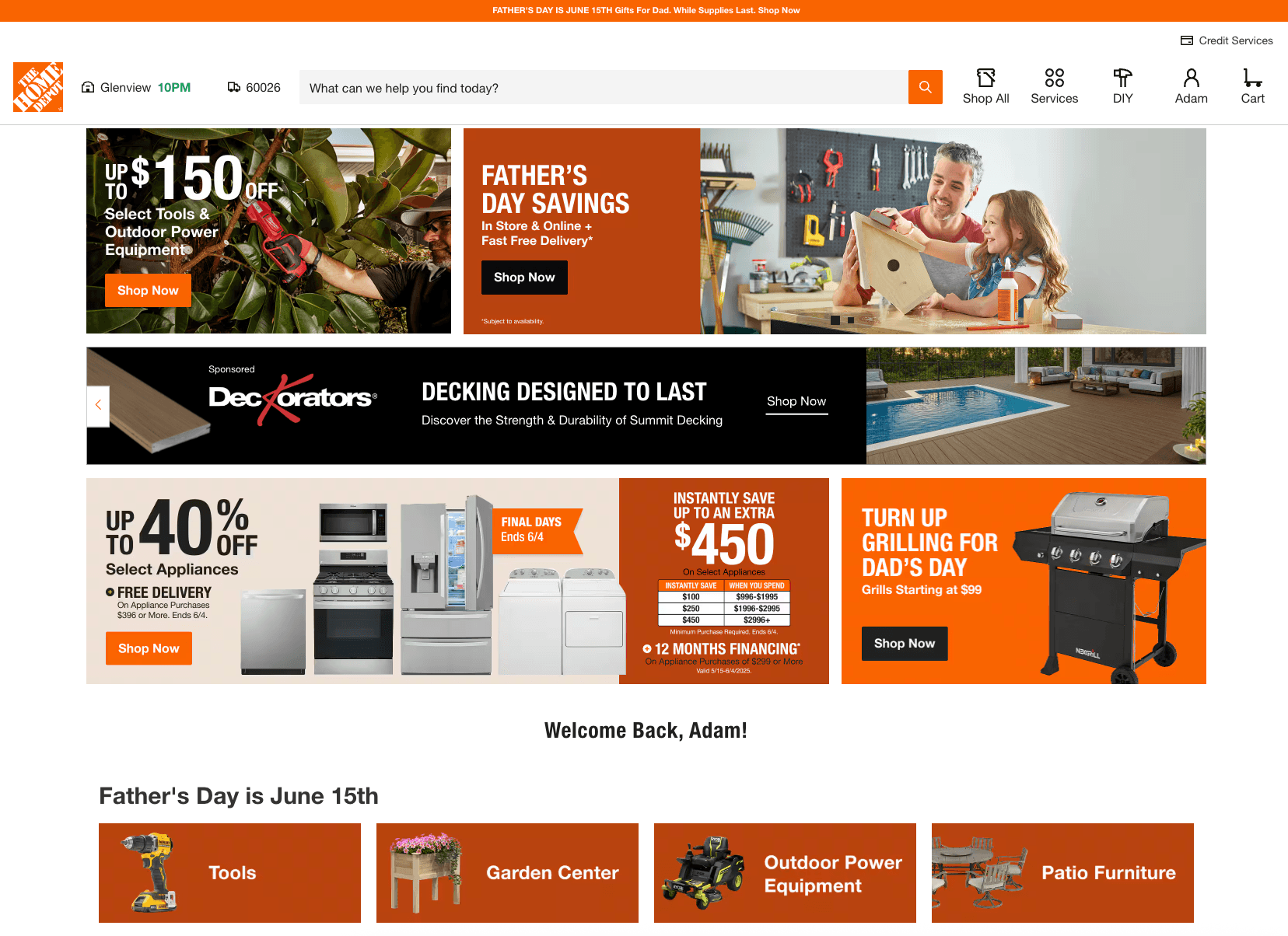
Here are some interesting things to note about this second home page view:
- The only difference between the before and after is that Home Depot knows my name, Adam.
- The store hasn’t changed even though I have never purchased a product at the store listed since there is one closer to me, which they should know by looking at my in-store purchase behavior and my account address (instead of where my browser thinks I am, which is based on Comcast)
- The content is the same. Nothing about my past buying behavior has influenced what products are suggested to me. I assume that every visitor is shown similar content and products.
A bit farther down on the page (below the fold), I see a few product specials, but if I use an “incognito” window, I see that the only part of this personalized section is the “Recently Viewed” portion.

Ironically, I live in a condominium (which Home Depot can see based on my address), so I am not eligible to buy garage storage systems or cabinets!
Just for fun, I also downloaded the Home Depot mobile app and viewed it before and after authenticating, and saw the same screens as shown above.
If I look at my Home Depot account, I can see products I have purchased in the past:

Unfortunately, none of this past purchase behavior influenced what I saw on the website or mobile app.
So, after decades of collecting data and spending millions on marketing suites, I see the same thing as every other visitor, but with a “hello Adam” message! Does this make me feel like a valued customer? Does this make me want to shop more often at Home Depot? Probably not.
But this problem isn’t isolated to one brand. This week, I was also looking for some products at Best Buy. Here is what I saw when I arrived at Best Buy’s website before I logged in:
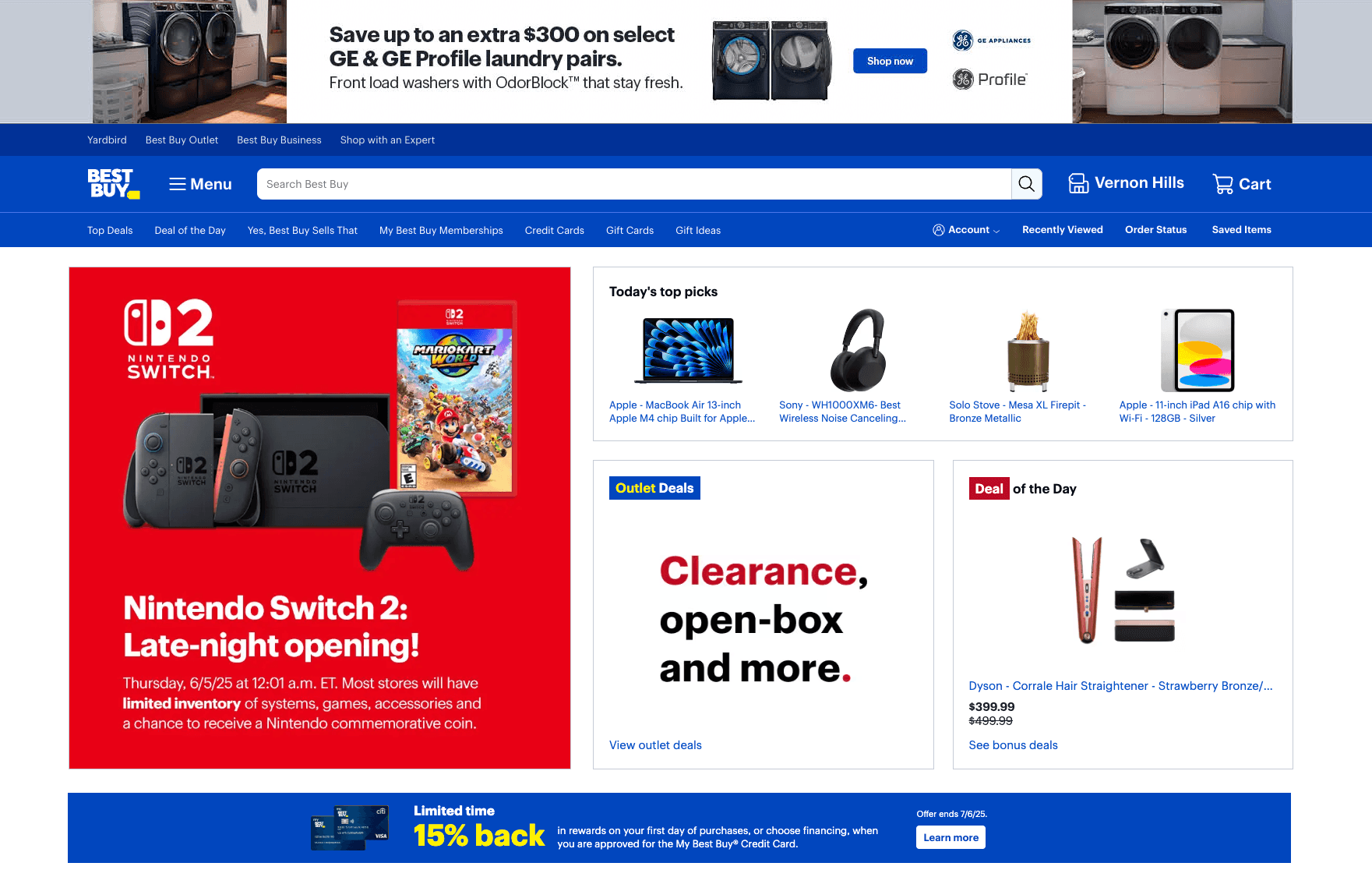
And here is what I saw after I logged in:
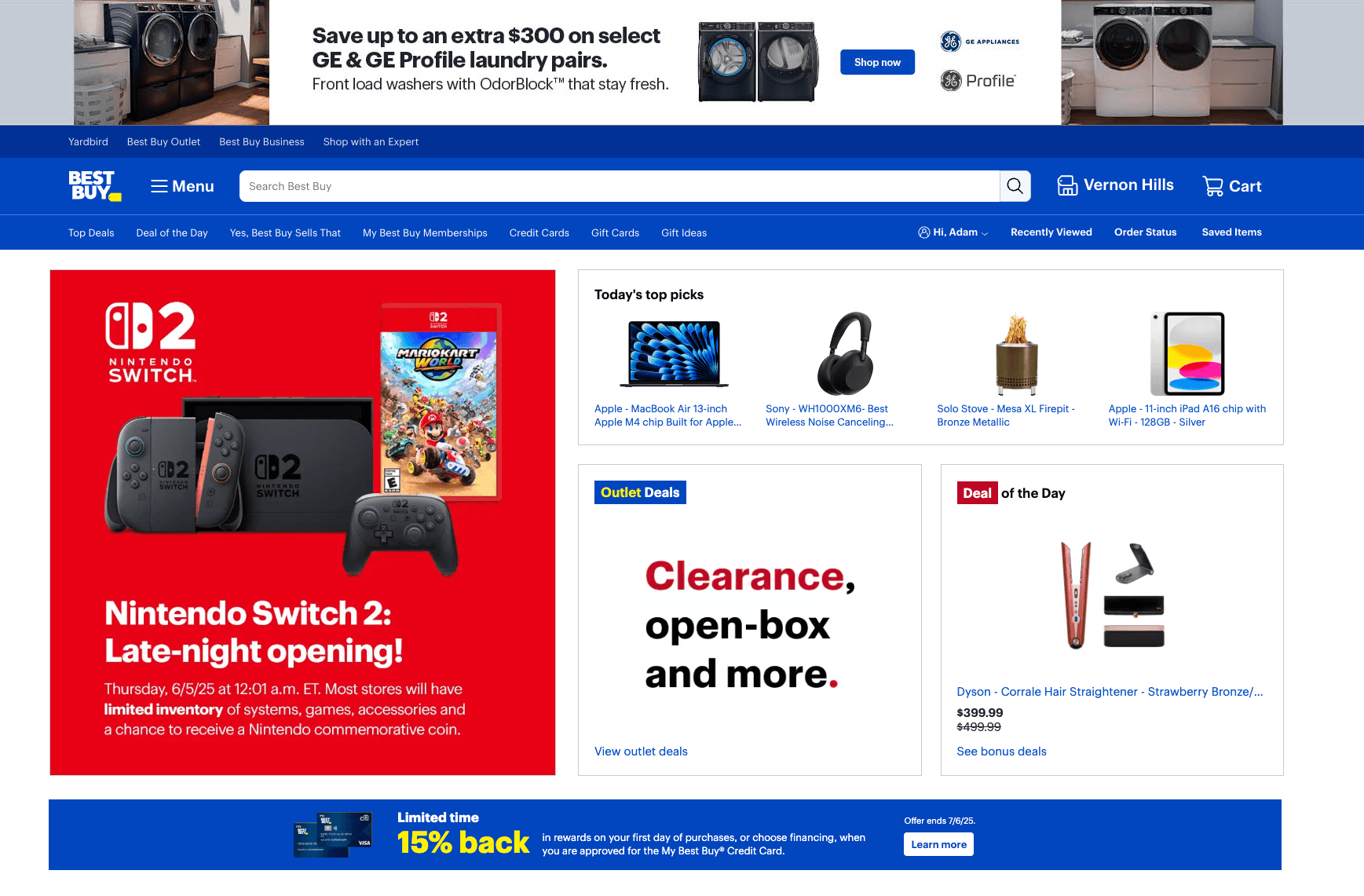
The only change is the “Hi, Adam” in the top navigation bar.
I could share many more examples of this lack of personalization - I just happen to be shopping on these two sites this week! This problem exists in almost every industry vertical, from retail to travel to B2B.
Why is this happening?
So why is this happening? Why are two top-tier brands providing personalization as if it were 1999, not 2025? Unfortunately, since I don’t currently work at or consult with either organization, I can’t say why their websites and mobile applications aren’t effectively leveraging data to provide personalized experiences. However, I can make educated guesses since I speak to many organizations.
The most common excuse I hear for a lack of personalization is data silos. The bigger the company, the bigger the data silos. I suspect that customer data for these organizations is housed in a large data warehouse, and the personalization engine runs off data in their marketing suite. Pushing all historical customer data from the warehouse to the marketing suite may be too expensive, so onsite personalization is limited. This is one of the reasons I was excited to join Hightouch. Hightouch allows organizations to tap into all customer data from the warehouse and deliver real-time, personalized experiences.
While many executives tout being “data-driven” and are shown as case studies by marketing suite vendors, being truly customer-centric is hard. At large organizations, politics, departmental silos, and data silos often prevent good-intentioned folks from providing common-sense, valuable customer experiences. It also makes me chuckle when these same organizations that are only personalizing with “Hi Adam,” talk about requiring real-time, same-session, AI-driven personalization! That’s like trying to go from a crawl to a marathon!
But personalization matters. Personalization builds customer loyalty. Think about what brands you are loyal to. You may think of Amazon, Netflix, and United Airlines. Amazon suggests products it thinks you want. Netflix recommends movies and shows you like. United Airlines shows destinations you want to visit. Brands that excel at personalization often steal market share from brands that don’t. Like it or not, everyone is in the data business now. How effectively you leverage customer data to personalize can be the difference between success and failure.
Enabling meaningful personalization
So, how can organizations fix this personalization gap? I believe organizations can do the following:
- Targeted use cases - Don’t try to boil the ocean. Identify a few targeted use cases and execute against those. If you are using a large packaged CDP solution that isn’t delivering for you, try a different approach in parallel. In the examples above, consider suggesting products that complement previously purchased products. Get a quick win.
- Forget departments - Customers don’t care what department you work in. They just want good experiences. Try to center your organization around customer experiences, not departments. The world has changed. When your departments were first created, most products were purchased in stores. We now live in a digital-first world, so you may have to change your organizational structure to adapt. Put the customer experience in the center and work around that. Adapt to your customers, don’t make them adapt to your organizational chart.
- Set your data free - You likely have all the customer data you need to provide meaningful personalized experiences. However, that data is probably trapped in a data warehouse and not easily accessible to your website, mobile application, or personalization tools. It’s often unrealistic to duplicate all of your customer data from your warehouse into your marketing suite (due to the cost), so consider Composable CDP options that allow you to tap into all customer data instead of limiting you to data subsets.
- Personalize in real time - Want to really impress your customers? You can tap into all past historical and current session data to deliver real-time, same-session personalized experiences. Same-session personalization shows customers and prospects that you are listening to them via data in a way that mirrors in-person attentiveness.
- Experiment with AI - Much of today’s AI buzz is vaporware, but there are ways to start using AI to improve customer personalization. Hightouch’s AI Decisioning is an example of a specific use case enabled by AI. Using reinforcement learning to test out various content and messages, but with human-enforced goals and guardrails, is a discrete way to personalize customer messages that improves over time. This message-based personalization isn’t using AI for AI’s sake or boiling the ocean. It’s a laser-focused application of AI with a clearly defined objective. That type of AI gives me hope that customer experiences will be better in the future!
Final thoughts
As consumers, we should demand more from brands. For fun, I suggest you crack open an “incognito” window on some of your favorite brand websites and see how different an experience you get when the brand knows who you are and doesn’t. If you work for a brand, try using your own digital products as a customer would and see what type of personalization you encounter. Challenge your organization and the brands you frequent to deliver more personalized experiences. Try to identify cool ways you can personalize customer experiences and find ways to get and leverage the data needed to provide those personalized experiences.






